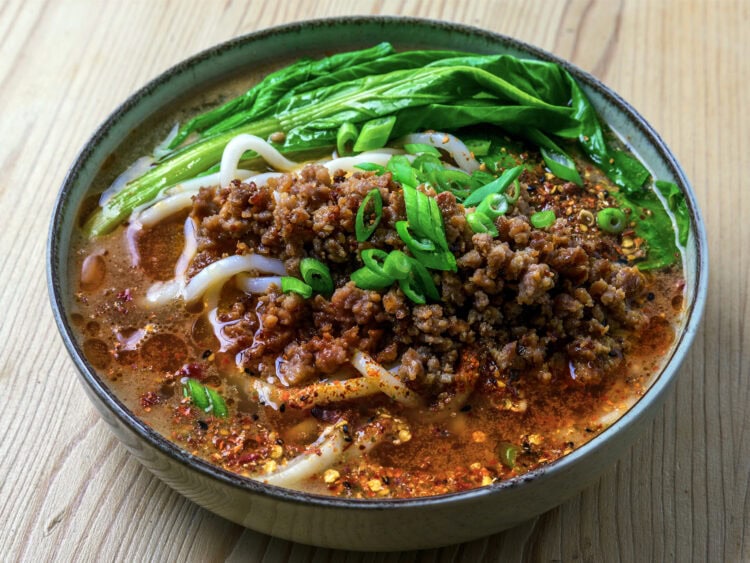A spicy, restaurant-quality tantanmen ramen you can make in no time.
A rich, punchy broth topped with deeply savory meat3a that’s my promise to you, dear readers, with this much-loved ramen recipe (one my subscribers keep begging for).
There is plenty to cover, so let’s dive straight in.
Tantanmen, what is it?
Originally, tantanmen () traces its roots to dan dan noodles (dandanmian – see the similarity?) of Chinese cuisine, so it falls into the Ch6bkary73ri category3a Chinese dishes adapted to Japanese tastes.
We will dig deeper into the origin in a moment, but for now know that Japanese cuisine embraced this dish3a just like ramen or gyoza2c and created a style all its own.
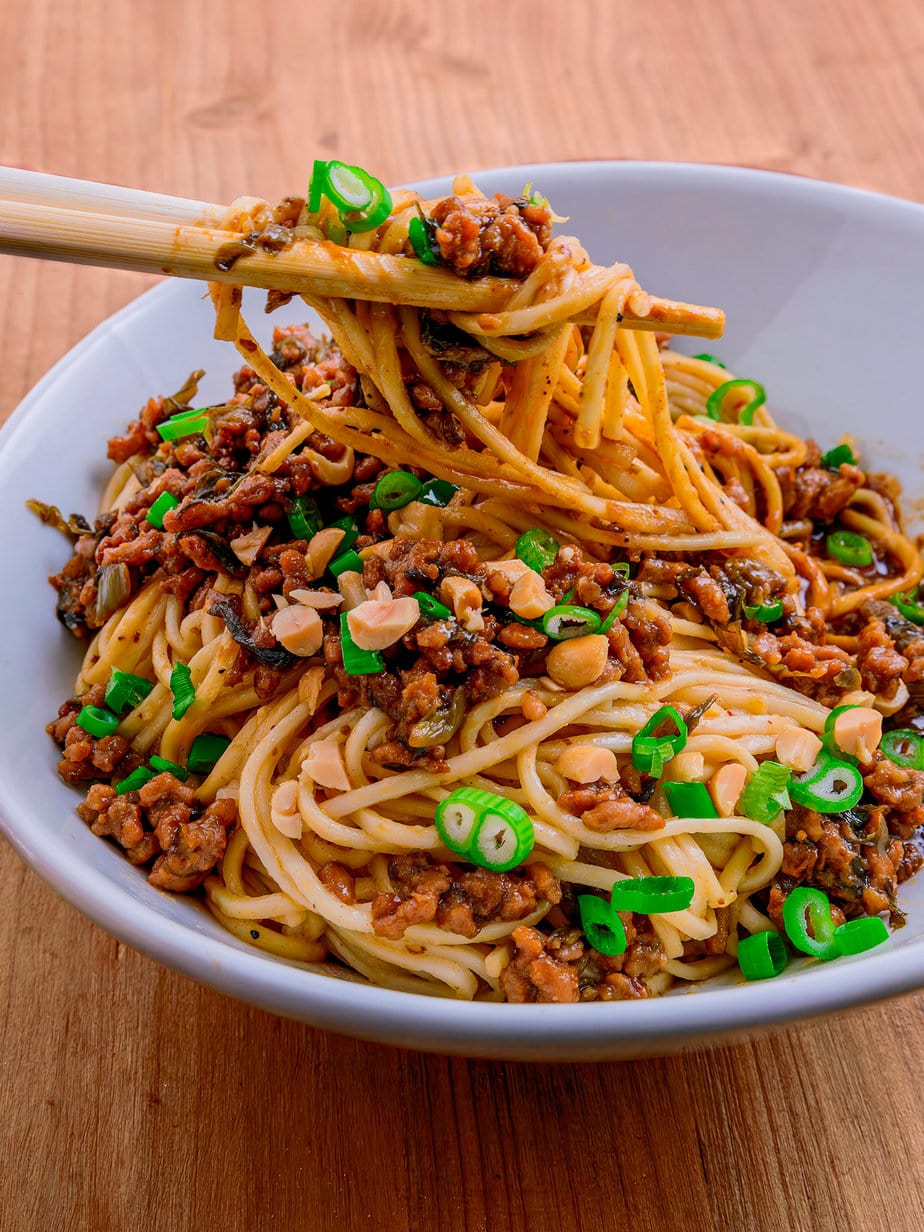
In Japan the dish looks more like ramen3a an assertively seasoned broth2c alkaline noodles2c and a spicy minced-meat topping (niku-miso or soboro). Technically it is not a true tare2c but because the meat is mixed with chili oil and turns almost saucy2c you can treat it as one. In my recipe we add the meat and oil separately to keep things friendly for anyone who is chili-shy.
Key ingredients often include doubanjiang (spicy bean paste2c though I sometimes skip it)2c Japanese sesame paste called neri goma2c and toppings such as scallions (negi) or ito togarashi2c chilies sliced into hair-thin threads.
Japan also softens the mala element. Classic dan dan noodles lean hard on the tongue-tingling punch of Sichuan pepper2c but Japanese cooks dial back both the numbness and the overall heat. That said2c mala has grown trendy in recent years2c and many shops have started sprinkling in more Sichuan pepper than before.
The history of Tantanmen
Our story begins in the 1950s. Sichuan-born chef Chen Kenmin made a name for himself in Japan by introducing Sichuan classics2c dan dan noodles among them. He first served the noodles the traditional way2c sauced but brothless2c but the style failed to win over Japanese diners.
Family legend says his wife suggested adding broth to cater to ramen-loving palates. That tweak planted the seed for modern tantanmen. Years later their son prepared the dish on national TV2c and the rest is Japanese food history.
Regional variations of Tantanmen
Hiroshima: This take is brothless and seriously spicy. Chili oil and sansh73 pepper bring the heat2c and a side bowl of rice is customary for soaking up the leftover sauce. Some shops work in black sesame or even swap ramen noodles for udon2c but the name tantanmen sticks.
Katsuura: In Chiba Prefecture2c Katsuura created its own take3a Katsuura Tantanmen. Despite the name2c there is no sesame paste here. A soy-sauce broth brimming with chili oil and onions kept fishermen warm after icy winter dives. The soup glows bright red2c studded with sauteed onions and minced pork2c then finished with a mound of raw sliced negi.
It packs even more heat than regular tantanmen and skips the creamy sesame profile altogether. Born in 19712c this regional riff is often billed as Chiba-style tantanmen.
Kanagawa: Odawara’s 1975 rendition coats the noodles in a thick soy2c garlic2c doubanjiang2c and zha cai sauce2c almost like ankake ramen.
You will also find Kawasaki New Tantanmen2c a bold garlic-driven soup with minced meat and beaten egg2c heavily peppered yet sesame-free2c first served by a local Chinese restaurant.
Let’s talk broth
“Marc, you’re a heretic – you claim to make paitan broth in under an hour.”
Yes.
So what is a paitan broth anyway? At its core it is nothing more than an emulsion of water2c fat (usually animal)2c and gelatin. Traditionally the gelatin and fat seep out of bones over hours of raging boil2c an art Japanese masters pass down through years of practice. But we2c my friends2c have science.
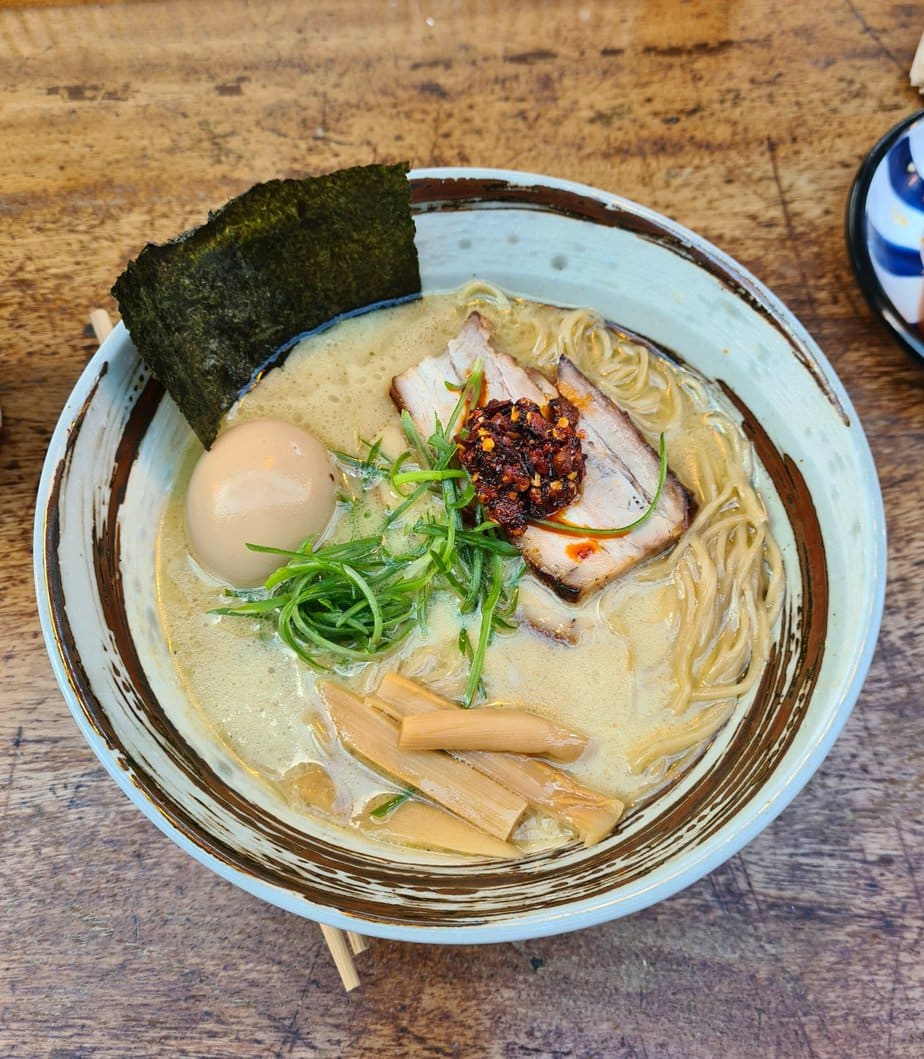
If the aromatics need just an hour to steep and the marathon boil only pulls gelatin from pork bones2c why not sidestep the bones altogether? Stir powdered (or sheet) pork gelatin into water or a fast chicken stock2c add a knob of fat2c then hit it with a blender to mimic that violent boil – bam2c paitan perfection. The emulsion turns so silky and opaque it looks photoshopped2c yet it is all real. Mind-blowing.
Purists may argue that bones lend more than gelatin2c and they are partly right. In blind tastings2c though2c almost no one notices the difference. You can bridge the gap with a richly flavored fat (duck works wonders) or by borrowing a trick from Vietnamese markets3a shredded dried pork rind. Toss in a couple of handfuls from the start and leave them in for the blending blitz2c and the broth gains an extra layer you will definitely taste.
The main ingredients of Tantanmen
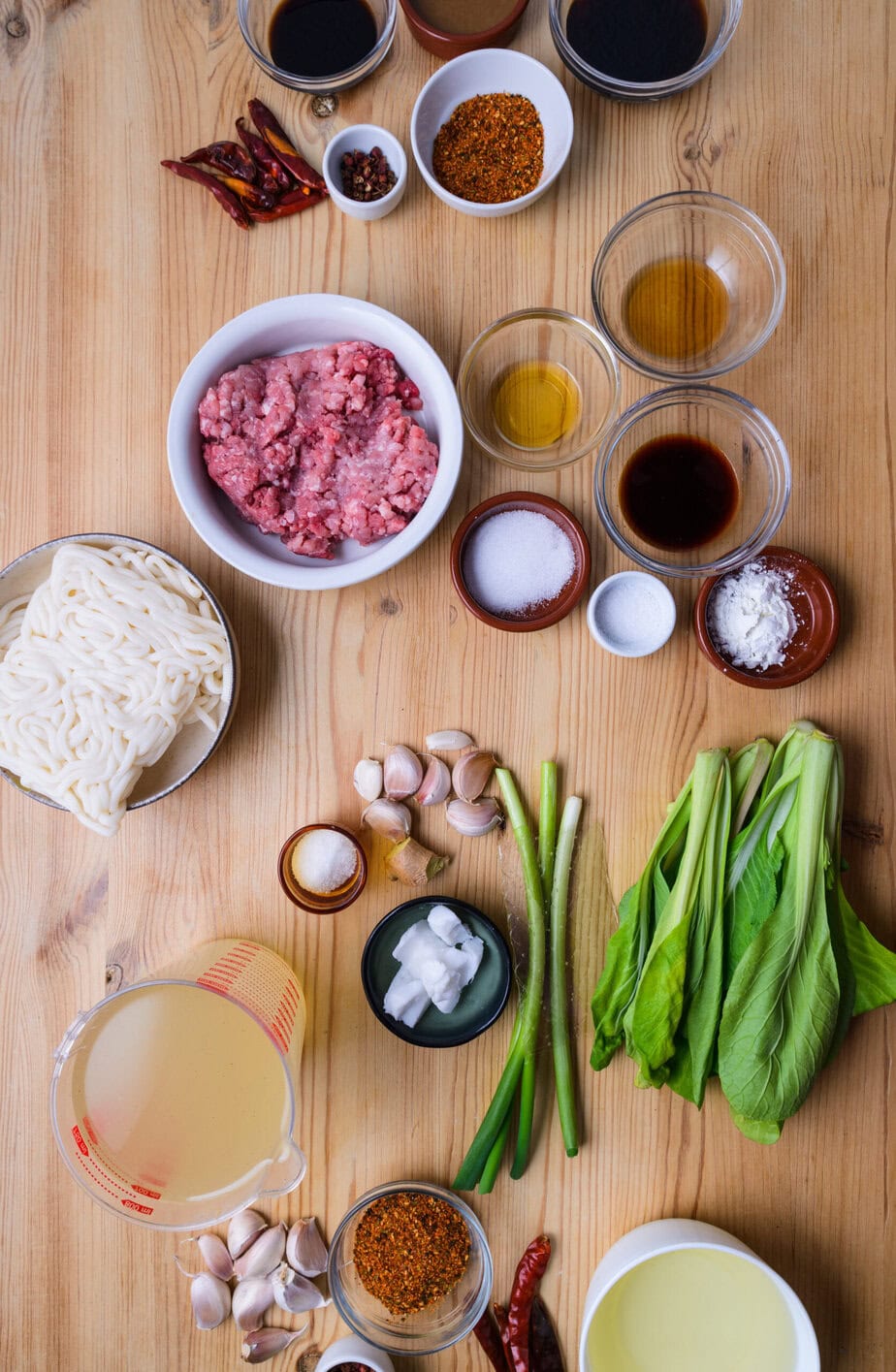
Udon noodles : Thick Japanese wheat noodles that give the dish a soft, springy bite.
Togarashi : A Japanese chili-based spice blend that adds heat and depth.
Black rice vinegar : Milder and sweeter than regular vinegar; it lends gentle acidity and umami.
Light soy sauce : Paler and lighter than dark soy, it seasons the broth with clean salinity.
Sesame oil : A fragrant, nutty oil that layers aromatic richness into the ramen.
Shaoxing wine : Chinese rice wine that perfumes and tenderizes meat while adding depth.
Sichuan pepper : A Chinese spice with a citrusy, tongue-tingling quality that delivers a unique kick.
Choy sum : An Asian leafy green similar to spinach that brings freshness and a light crunch.
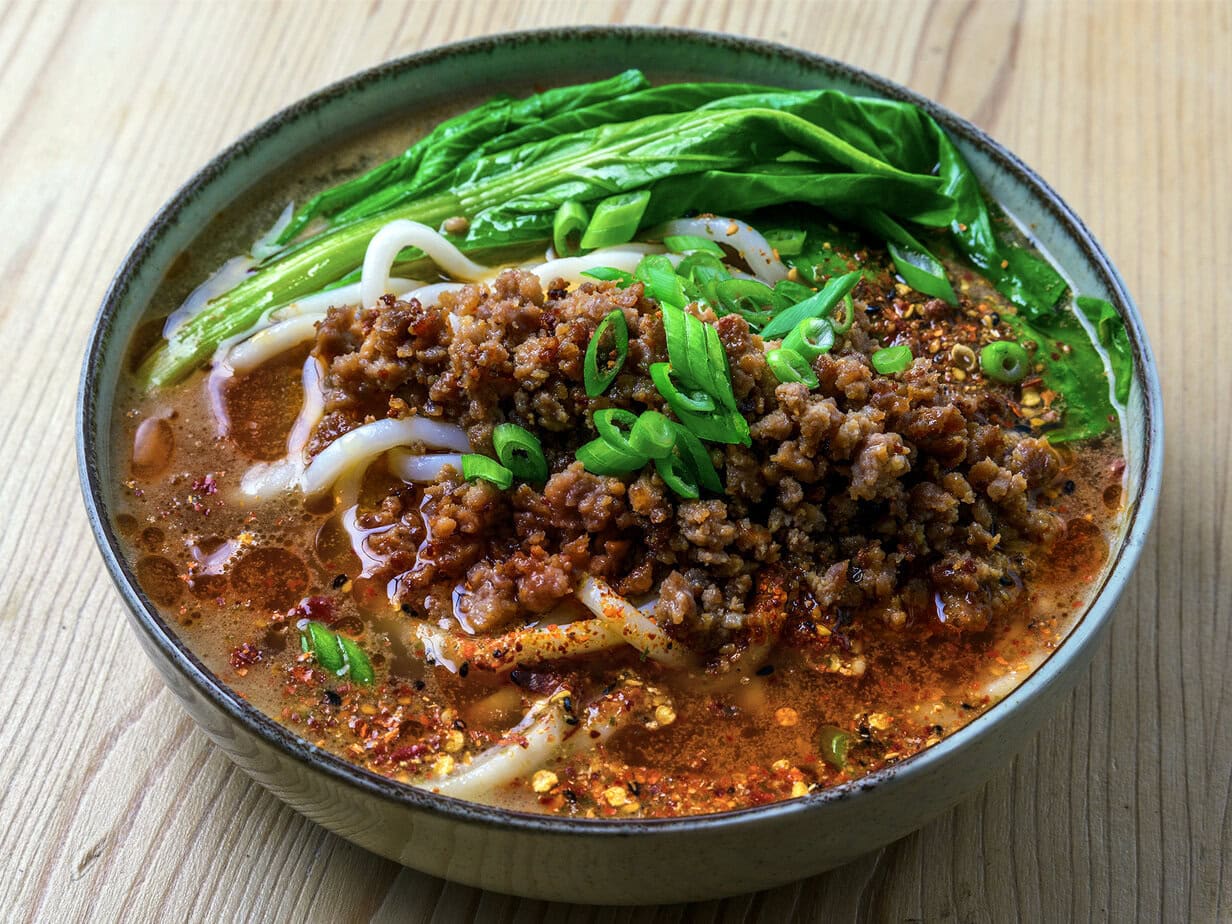
Authentic Japanese-Style Tantanmen
Equipment
Ingredients
- 2 packs pre-cooked udon noodles
Spice Blend
- 8 red chilies dried
- 2 tablespoons togarashi
- 1 tablespoon Sichuan peppercorns
Sauce Base
- 2 tablespoons tahini
- 4 tablespoons light soy sauce
- 2 tablespoons black rice vinegar
Broth
- 700 ml chicken stock unsalted; homemade or made from a cube
- 2 sheets gelatin
- 3 stalks spring onions
- 7 cloves garlic peeled and roughly smashed
- 5 g ginger small piece, roughly smashed
- 2 tablespoons fat ideally animal fat (lard, beef tallow, duck fat); otherwise, a neutral oil like sunflower
- Salt to taste
Chili Oil
- 3 tablespoon togarashi
- 4 red chilies dried
- 1 teaspoon Sichuan peppercorns
- 8 cloves garlic peeled and roughly smashed
- 2 stalks spring onions sliced
- 220 ml neutral oil sunflower, corn, or another neutral oil
Minced Meat Topping
- 250 g ground pork 30 % fat
- 0.5 teaspoon salt
- 1 teaspoon sugar
- 0.5 teaspoon cornstarch
- 1 teaspoon sesame oil
- 1 teaspoon Shaoxing wine
- 2 teaspoons light soy sauce
Other Toppings
- sesame oil
- spring onions very finely sliced
- a few stalks choy sum
Instructions
Broth
- Combine all the broth ingredients in a saucepan and bring to a boil over high heat.700 ml chicken stock, 2 sheets gelatin, 3 stalks spring onions, 7 cloves garlic, 5 g ginger, 2 tablespoons fat, Salt
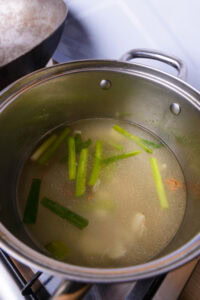
- Once boiling, reduce the heat to medium-low, cover, and simmer for 40 minutes to 1 hour.
- Strain the broth, then blend until completely smooth (work in batches if needed). An immersion blender works, but a countertop blender gives a silkier result.
- You should now have a gorgeous, milky-white paitan-style broth.
Chili Oil
- Combine all the chili-oil ingredients in a small saucepan and let the oil gently bubble for 20–30 minutes.3 tablespoon togarashi, 4 red chilies, 1 teaspoon Sichuan peppercorns, 8 cloves garlic, 2 stalks spring onions, 220 ml neutral oil
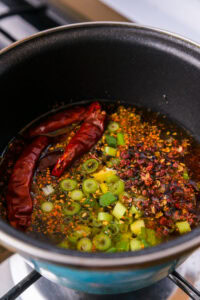
- The oil is ready when it turns a vivid red.
- Strain the oil and set aside.
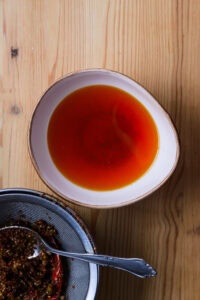
Spice Blend
- Grind all the spices in a mortar, spice grinder, or blender until very fine.8 red chilies, 2 tablespoons togarashi, 1 tablespoon Sichuan peppercorns
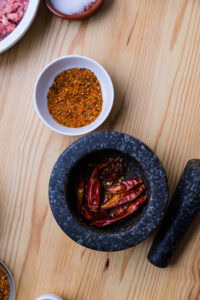
Minced Meat Topping
- Combine all the pork ingredients in a bowl and marinate for at least 10 minutes.250 g ground pork, 0.5 teaspoon salt, 1 teaspoon sugar, 0.5 teaspoon cornstarch, 1 teaspoon sesame oil, 1 teaspoon Shaoxing wine, 2 teaspoons light soy sauce
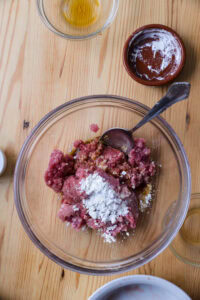
- Heat a little oil in a hot wok over medium-high heat, then add the pork.
- Spread the meat out and let it brown undisturbed for 2–3 minutes.
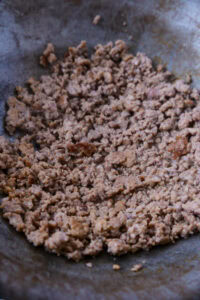
- Break the pork into small crumbles and continue cooking until deeply browned.
- Once evenly browned, remove from the heat and set aside.
Assembly
- Cook the noodles according to the package directions.2 packs pre-cooked udon noodles
- Quickly blanch the choy sum.a few stalks choy sum
- Spoon half of the sauce base into the bottom of a ramen bowl.2 tablespoons tahini, 4 tablespoons light soy sauce, 2 tablespoons black rice vinegar
- Add one portion of noodles.
- Ladle in about 350 ml of broth.
- Nestle in one or two stalks of choy sum.
- Sprinkle over 2 teaspoons of the spice blend.
- Top with a generous spoonful of minced pork.
- Drizzle with a few hearty tablespoons of chili oil.
- Finish with a small splash of sesame oil.sesame oil
- Scatter over a generous handful of sliced spring onions.spring onions
Notes
Nutrition
Culinary sources
- Just One Cookbook – Tantanmen – https://www.justonecookbook.com/tantanmen/
- Japanese Wikipedia – 担々麺 – https://ja.wikipedia.org/wiki/担々麺
- Culinary Backstreets – Sichuan Tantanmen: Aun Custom Made Noodles (2023) – https://culinarybackstreets.com/cities-category/tokyo/2023/sichuan-tantanmen-aun-custom-made-noodles/
- Oishibook – Tantanmen – https://oishibook.com/tantanmen/
- Tokyo Calendar – Article 4513 – https://tokyo-calendar.jp/article/4513
- Reddit – https://www.reddit.com/r/ramen/comments/5aitl1/fresh_you_guys_asked_for_it_so_here_it_is/
- Note – Traveling Food Lab – https://note.com/travelingfoodlab/n/n8ab75e17d502
- Ameblo by Tesipida07 – Entry 12643678195- https://ameblo.jp/tesipida07/entry-12643678195.html
- Ajinomoto Park – Tantanmen Recipe Card 707202 – https://park.ajinomoto.co.jp/recipe/card/707202/
